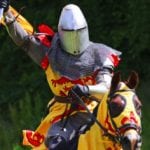 Crime
Crime  Crime
Crime  Technology
Technology 10 Hilariously Over-Engineered Solutions to Simple Problems
 Miscellaneous
Miscellaneous 10 Ironic News Stories Straight out of an Alanis Morissette Song
 Politics
Politics 10 Lesser-Known Far-Right Groups of the 21st Century
 History
History Ten Revealing Facts about Daily Domestic Life in the Old West
 Weird Stuff
Weird Stuff 10 Everyday Products Surprisingly Made by Inmates
 Movies and TV
Movies and TV 10 Actors Dragged out of Retirement for One Key Role
 Creepy
Creepy 10 Lesser-Known Shapeshifter Legends from Around the World
 Animals
Animals 10 Amazing Animal Tales from the Ancient World
 Gaming
Gaming 10 Game Characters Everyone Hated Playing
 Crime
Crime 10 Terrifying Serial Killers from Centuries Ago
 Technology
Technology 10 Hilariously Over-Engineered Solutions to Simple Problems
 Miscellaneous
Miscellaneous 10 Ironic News Stories Straight out of an Alanis Morissette Song
Who's Behind Listverse?

Jamie Frater
Head Editor
Jamie founded Listverse due to an insatiable desire to share fascinating, obscure, and bizarre facts. He has been a guest speaker on numerous national radio and television stations and is a five time published author.
More About Us Politics
Politics 10 Lesser-Known Far-Right Groups of the 21st Century
 History
History Ten Revealing Facts about Daily Domestic Life in the Old West
 Weird Stuff
Weird Stuff 10 Everyday Products Surprisingly Made by Inmates
 Movies and TV
Movies and TV 10 Actors Dragged out of Retirement for One Key Role
 Creepy
Creepy 10 Lesser-Known Shapeshifter Legends from Around the World
 Animals
Animals 10 Amazing Animal Tales from the Ancient World
 Gaming
Gaming 10 Game Characters Everyone Hated Playing
10 Knights Of The Round Table You’ve Never Heard Of
The legend of King Arthur and his Knights of the Round Table has been popular for centuries. King Arthur himself emerged as a literary figure sometime after 800 when he started to appear in manuscripts such as the Y Goddoddin in Wales.
The history of his loyal knights, however, is much less clear. They first appeared in the works of the French writer Chretien de Troyes in the 12th century, which was also the first mention of Lancelot and the quest to find the Holy Grail. Historians have speculated about the source of Chretien’s ideas—or whether they are all his own creations.
Although the origin of the knights is disputed, no one can argue that they didn’t have a significant impact on Western literature. Tales of Arthur and his knights became popular across medieval Europe. Writers from Portugal to Germany translated the works into their own languages and wrote new tales which added to the now-colossal Arthurian canon.
Depending on which stories we count, there are 12–150 named Knights of the Round Table. Most of them have unique personalities and stories. Some knights, like Percival and Galahad, are known everywhere. But many of these figures have fallen out of common knowledge or remain niche, regional figures.
In this list, we’re going on a trip deep into the Arthurian cycle to explore the tales of 10 knights of Arthur that you’ve probably never heard of.
10 Sir Lamorak
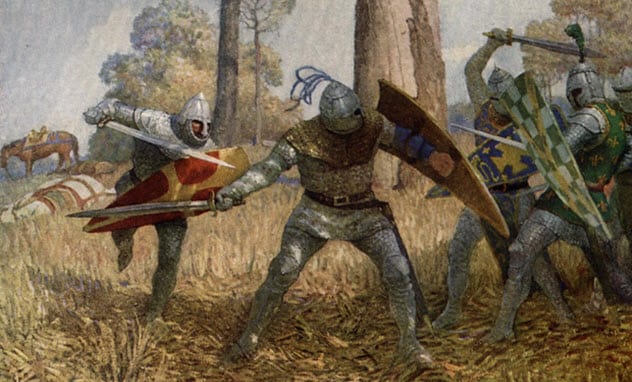
Alongside Lancelot and Tristan, Sir Lamorak was one of the three strongest Knights of the Round Table but, for whatever reason, is much less famous today than his brother Percival. Lamorak was one of the sons of King Pellinore, who was himself sometimes included on the list of Round Table knights.
A bold, confident man who was quick to anger, Lamorak was an exceptionally skilled knight on the field of battle. But in peacetime, he sometimes caused trouble. In Arthurian legend, it is said that he could fight off more than 30 other knights at once, making him one of Arthur’s most valuable allies.
His actions off the field of battle brought about his demise. As part of a long-running family feud between himself and the brothers Sir Gawain, Sir Agravain, Sir Mordred, and Sir Gaheris, Lamorak seduced their widowed mother and bedded her.
Sir Gaheris caught them in the act and is said to have killed his mother on the spot. Gaheris only spared Lamorak because he was unarmed. After rejecting King Arthur’s offer to settle the dispute for them, Lamorak was ambushed by the brothers and murdered.[1] Sources vary as to which brother actually killed Lamorak.
9 Sir Agravain
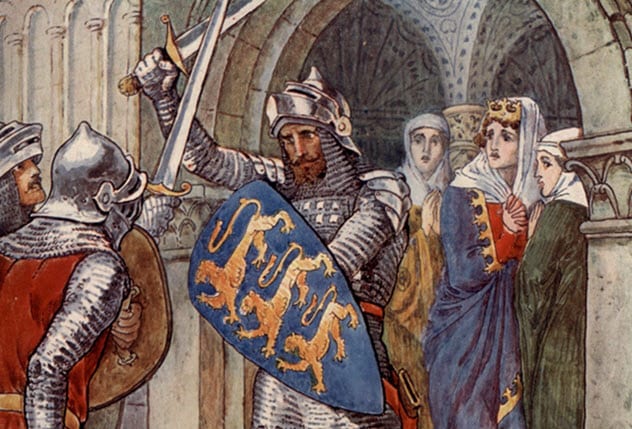
Sir Agravain was one of the major antagonists of early Arthurian tales. He was an arrogant, proud man who had a sharp wit and little love for other people. His actions often brought him into conflict with the other knights, particularly his brother Gaheris, and Agravain was embroiled in the deaths of several other figures at Arthur’s court.
But in his early days, Agravain was a noble and valiant knight. A relative of King Arthur, Agravain proved himself by liberating the prisoners on the Hill of Wretches, thereby earning his place at the Round Table. He made a name for himself by fighting in the Saxon Wars and became known as a skilled and prestigious knight.
His pride would be his downfall, however. Jealous over the knighting of his brother Gaheris, Agravain secretly followed Gaheris on a quest and tried to kill him twice, both times being bested in hand-to-hand combat. Agravain bragged in front of his brothers on several occasions, turning them against him.
When Gaheris killed their mother, Agravain was pleased to finally have a reason to kill Gaheris and pursued him again, only being stopped by Gawain, who asked Agravain to take pity on his kin.
A jealous man, Agravain hated Lancelot because he was the greatest knight alive. After discovering Guinevere and Lancelot’s affair, Agravain was the first knight to break the news to Arthur and was part of the plan to ambush and murder Lancelot. He failed, however, and Lancelot slew him.[2]
8 King Cador Of Cornwall
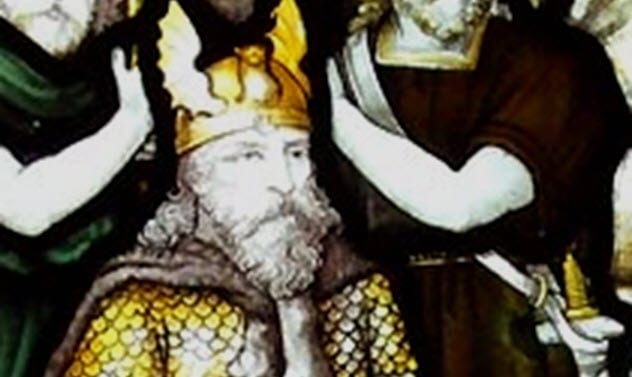
One of the handful of British kings who were also Knights of the Round Table, Cador has been listed as one of Arthur’s close allies since his earliest appearance in literature. Cador was the son of Gorlois, making him Arthur’s maternal half-brother and the brother of Morgan le Fay.
In other sources, however, Cador is described as being “of Roman stock.” This may mean that he wasn’t a relative of Arthur at all and was simply a close friend.
Cador is most famous for hosting Guinevere in her youth, educating her, and ensuring that she acquired the skills required as a noblewoman. One of Arthur’s most trusted generals, Cador commanded the army of Britons who relieved the Siege of Mount Badon and drove the invaders back to their encampment on the Isle of Thanet.
He was trusted to lead campaigns as far afield as Scotland and Gaul, where he commanded the rear guard at the Battle of Soissons. Together with Lancelot, Cador resisted the Roman emperor who ambushed them while they carried prisoners back to Paris.
At the Battle of Camlann, as Arthur was reeling from his wounds, he granted the kingship of Britain to Cador’s son Constantine as a sign of his trust. Cador ultimately met his end at Camlann while fighting to defend Arthur.[3]
7 Sir Daniel von Blumenthal
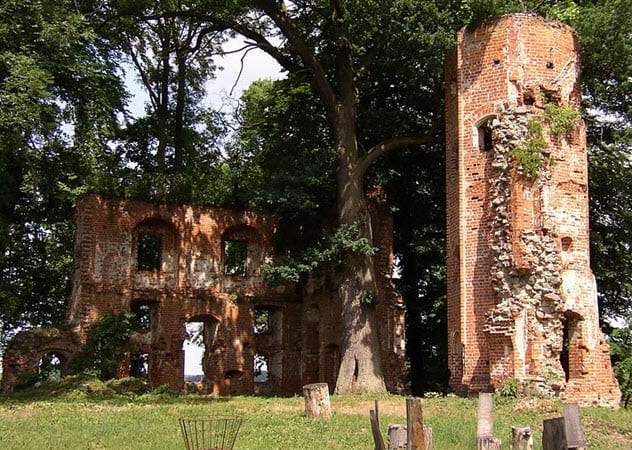
Unlike most Arthurian literature, Sir Daniel first appears in a German tale, Daniel von dem bluhenden Tal, which was written around 1220 by Der Stricker. In the story, Arthur allows Daniel to join the Knights of the Round Table after he proves himself by defeating Sir Percival and Sir Gawain.
Shortly after, Arthur receives an ultimatum from a giant, who reveals that his lord has built a palace on the back of an elephant and is marching with an army of giants to conquer the kingdom. This lord, King Matur, uses a mechanical dragon with a horrendous scream to force his enemies to cover their ears, making them unable to fight.
While Arthur and his knights are contemplating what to do, Daniel decides to prove himself by going to defeat Matur alone. Daniel faces many obstacles along the way which initially seem like distractions, but they lead Daniel to a magic sword that is crucial in the final defeat of Matur. This sword seems to have been inspired by the Arthurian myth of Excalibur.
As a reward for his efforts, Arthur gives Matur’s old kingdom to Daniel, making him one of the most powerful knights in his court. While popular in Germany at the time, the tale fell out of fashion quickly across Europe because Daniel resembled a dark age Germanic hero rather than a medieval knight of chivalry and honor.[4]
6 King Urien Of Gorre
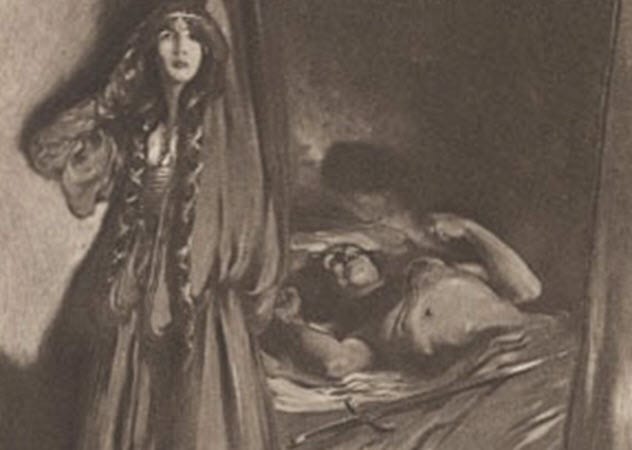
King Urien was a Celtic monarch who ruled Rheged, the region southwest of Hadrian’s Wall. He was included in one of the famous poetic Welsh Triads as one of the three greatest warrior-kings in Britain. His death was lamented as one of the three unfortunate assassinations in British history.
His many successes and victories are preserved today in the medieval manuscript The Book of Taliesin. Together with several other local kings, Urien resisted the northern expansion of the Anglo-Saxon invaders. He was eventually assassinated on the orders of Morgant Bwlch, another northern king, who was jealous of Urien’s power and reputation.
Over time, his exploits became popular in Welsh myth and he became King Urien of Gorre, a legendary figure and Knight of the Round Table. He was a peaceful vassal during the reign of Uther Pendragon, Arthur’s father, and happily married the wicked witch Morgan le Fay.
Upon Uther’s death, however, Urien and many other powerful men in the kingdom opposed Arthur’s rise to the throne and rebelled against him. Arthur defeated them, and Urien was one of his most loyal vassals thereafter and a trusted Knight of the Round Table.
Neither Morgan nor Urien was happy with their marriage. Morgan hatched a secret plot to steal Excalibur, murder Urien and Arthur, and install her lover, Sir Accolon, on the throne. She failed in her plan to kill Urien when his bastard son Owain caught her trying to stab him and forced them apart.[5]
5 Sir Geraint
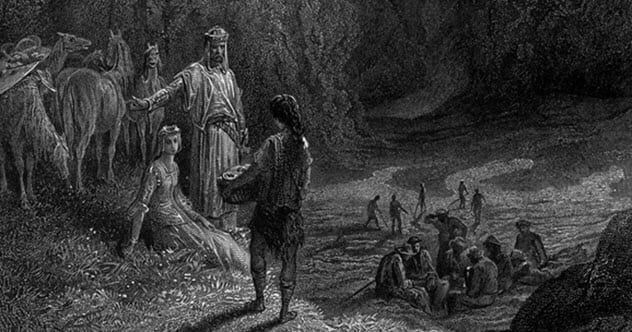
Sir Geraint was a young and brave knight who owned land in Dumnonia (modern-day Cornwall) that he inherited from his father, Erbin. Geraint and his wife, Enid, were good friends with both Arthur and Guinevere.
So when rumors began to spread around the court that Guinevere had developed feelings for Lancelot, Geraint remained silent. But he began to worry after learning that Guinevere and Enid were spending a lot of time together in Dumnonia.
Paranoid that Guinevere would lead his wife astray, he asked Arthur’s permission to leave the royal court and return home. Geraint told Arthur that he wanted to be a better ruler, but truthfully, Geraint wanted to keep an eye on his wife.
When he returned home, he spent all his time with Enid, to the point that his people began to whisper that he’d lost his manliness and was no longer a good ruler. Enid heard these rumors, and one morning, Geraint caught her crying that she’d been a bad wife. He jumped to conclusions and assumed that she was confessing her infidelity, but in truth, she was upset that she’d kept him from being a knight.
To prove his manliness, Geraint, accompanied by Enid, went on a tour of Dumnonia, facing many trials and proving to his people that he was a skilled and courageous leader. The journey strengthened the bonds between Geraint and his wife. They remained close for the rest of their lives, providing the rest of Arthur’s knights with a good example.[6]
4 Sir Caradoc Short Arm
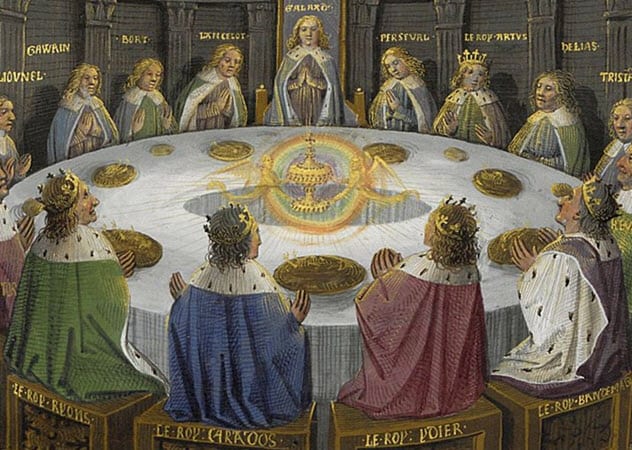
Caradoc Short Arm (whom we’ll just call “Caradoc”) was a powerful man in the kingdom of Gwent. (In some stories, he was its king.) He held great influence among the kings of Britain and was a loyal knight of Arthur’s father, Uther Pendragon. But Caradoc was also one of the kings who took up arms against Arthur in the early days because he didn’t think Arthur was fit to be king.
Arthur defeated Caradoc, and afterward, Caradoc became one of Arthur’s closest advisers. Caradoc was later described as one of Arthur’s three closest knights and Arthur’s chief elder at Celliwig. Caradoc’s wife, Tegau Eufron, was one of the most beautiful women in the country.
One day, a sorcerer named Eliavres appeared at Caradoc’s court and tempted him to try to behead Eliavres. If the knight couldn’t, the sorcerer would be allowed to take the knight’s head instead.
Caradoc tried to behead the sorcerer but couldn’t. Instead of killing the knight, however, Eliavres revealed that he was actually Caradoc’s natural father. Eliavres had bewitched Caradoc the Elder (the man whom Caradoc had believed to be his father), run away with Caradoc’s mother, and impregnated her.
Caradoc was distraught and, in typical knightly fashion, went on a long, perilous quest. There, he met his future best friend, King Cador. Eventually, Caradoc arrived in Caradoc the Elder’s kingdom and told him what the sorcerer had done.
They captured and imprisoned Eliavres, but before long, he made an escape attempt. When Caradoc tried to stop Eliavres, the sorcerer summoned a wicked serpent which wrapped itself around Caradoc’s arm, disabling the limb.
Caradoc traveled Britain in search of a way to remove the evil snake and learned that it would balk at the sight of vinegar. He, his wife, and Cador hatched a plan. His wife sat in a bath of milk, while Caradoc settled into a bath of vinegar nearby.
The snake tried to leap from one to the other, and Cador cut it down in midair. Unfortunately, Caradoc’s arm never recovered, and he was thereafter known as “Caradoc Short Arm.”[7]
3 Sir Lucan
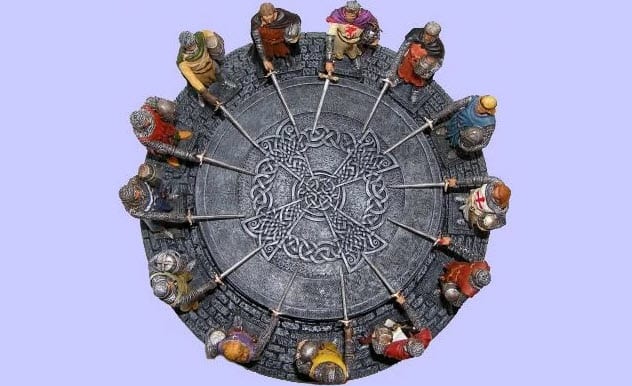
Sir Lucan (aka Lucan the Butler) is an overlooked knight in Arthurian legend. Though he lacks any lengthy tales of his own trials and adventures, he is consistently one of Arthur’s closest and most trusted confidants.
One of Arthur’s earliest followers, Lucan remained loyal to Arthur when many of the other kings raised their swords in rebellion. Being called the butler might seem like an insult today, but historically, the position of butler was very prestigious. One of the closest men to the king, the butler was in charge of the royal court.
Lucan was also a frequent attendee at tournaments, though he didn’t excel as much as the other knights of the Round Table. At one point, he was so badly wounded by Sir Tristan that Lucan had to be taken to a nearby abbey for medical treatment.
He was one of the knights who stuck by Arthur when Lancelot and Guinevere betrayed Arthur. Lucan often acted as a go-between for both sides in an effort to restore peace.
Always opposed to war, he was one of the few knights who counseled Arthur against going to battle with Mordred, which led to the deaths of many of Arthur’s best knights. Alongside his brother, Bedivere, Lucan was the last knight to fall protecting Arthur in the disastrous Battle of Camlann.[8]
2 Sir Lanval
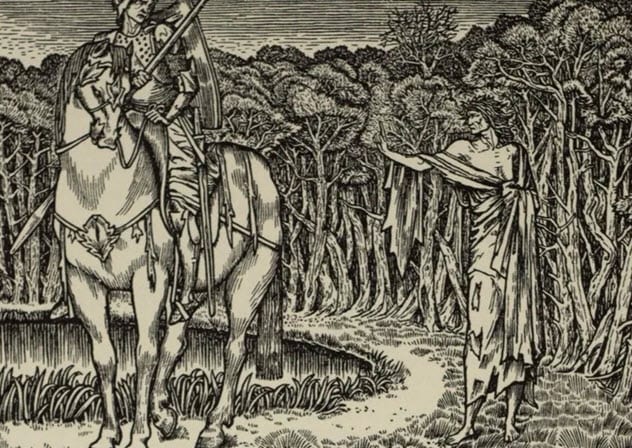
Sir Lanval, one of Arthur’s most unfortunate knights, was initially envied by the other knights for his beauty, generosity, and bravery. They feigned affection for Lanval while secretly hoping some misfortune would come to him.
Eventually, when Arthur was handing out gifts and wealth to his followers, he forgot about Lanval. However, Lanval, who was already far from his ancestral home, was too good to ask for a gift. The other knights disliked him so much that they didn’t tell Arthur that Lanval had been missed. As a result, he fell into poverty and sadness.
Lanval’s fortunes seemed to change when he drew the eye of a beautiful fairy mistress, who fell in love with him. They began spending time together, and she promised to give him all the gold and whatever else he needed. She would also come to him when he wanted as long as he kept her a secret.[9]
Of course, this was never bound to last. Shortly after this, Guinevere, Arthur’s unfaithful wife, made advances toward Lanval. He refused her, and Guinevere, who was unused to being rejected by men, accused him of homosexuality. To protect his reputation, Lanval blurted out that he had a mistress and that she was even more beautiful than Guinevere.
Guinevere took the matter to Arthur. She told him that Lanval had tried to make her his lover and, when she refused, bragged that he had a more beautiful mistress. Enraged, Arthur put his knight on trial. If his supposed mistress appeared, he would be acquitted. But if she didn’t, he would be punished.
Just when it seemed that he was out of luck, Lanval’s mistress appeared. She told the king that Guinevere had lied and that his knight was honest and true. The other knights of the Round Table accepted her argument. Arthur was ready to welcome Lanval back to the Round Table. But instead, Lanval departed with his fairy mistress, who returned to Avalon.
1 Sir Gareth
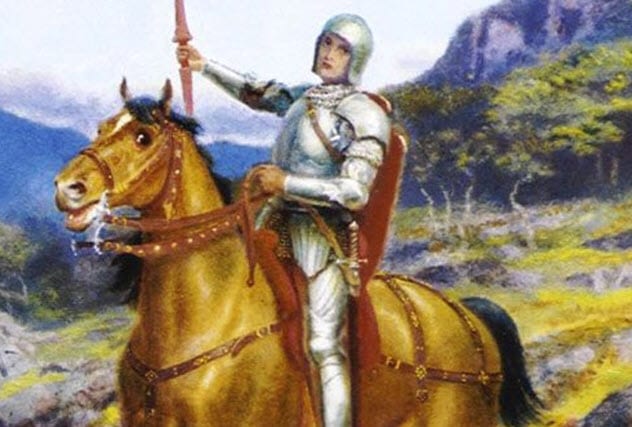
Sir Gareth was one of the sons of King Lot and was therefore a brother of Gawain, Gaheris, and Agravain. Gareth seems to have disliked his brothers, however, because he came disguised as a peasant boy with no past when he first arrived in Arthur’s court.
Sir Kay put Gareth to work in the kitchen, teasing him for his soft hands and giving him all the worst jobs. Even so, he excelled as a knight from an early age, defeating the Green Knight, Red Knight, and many others and forcing them to swear fealty to Arthur.
Gareth even entered a tournament in disguise with the express purpose of defeating his brothers. He only revealed himself when he knocked down his brother Gawain in the final combat.
In later life, Gareth distanced himself from the unchivalrous actions of his brothers and sometimes intervened in their plans. He stopped Gawain and Agravain from killing their other brother Gaheris, condemned them for killing Sir Lamorak, and tried to stop them from revealing Lancelot and Guinevere’s affair.
Despite his loyalty to Arthur, however, Gareth often sided with Lancelot because it was Lancelot who first showed Gareth kindness and knighted him. In the end, he was accidentally killed by Lancelot as he attempted to save Guinevere from being burned at the stake.
Gaheris stood up for his brother and switched from Lancelot’s side to Arthur’s, urging him to go to war with Lancelot over his actions. Ultimately, this led to the Battle of Camlann and the deaths of many of Arthur’s knights.[10]
Read more intriguing stories about knights on 10 Awesome Medieval Knights You’ve Never Heard Of and 10 Fascinating Facts About Knights.
